
11 minute read
Mārahau, reconnecting with the whenua
Mārahau beach. Bottom right: looking on to Abel Tasman National Park.
Mārahau
RECONNECTING WITH THE WHENUA
‘O n a good day, it’s beautiful here,’ says Renee Thomas (Ngāti Rārua, Ngāti Tama), kaitiaki for Wakatū Incorporation on the whenua at Mārahau. ‘On a bad day, it’s pretty bad. The house shakes, and that’s not even the wind; it’s the sea hitting the sand. It’s very exposed.’ All the same, at Mārahau she feels her senses returning. ‘I’m more aware of my surroundings. Being so much closer to nature allows you to be more open to things, to what’s going on. I’ll pick up wind shifts and know that rain’s coming. I go to bed when it’s dark, wake up when it’s light. I don’t set an alarm – I rise naturally.’ Then she laughs: ‘Ok, when we have dawn blessings at five in the morning, yes, I set an alarm.’
This soil here, dark and friable, has been owned by the families of Wakatū for generations. The whānau and hapū settled here at Mārahau in the early 1800s and have owned the land ever since. Originally part of the wider papakāinga, the land and foreshore area at Mārahau was reserved for the benefit of the Māori customary owners as part of the Nelson Tenths’ Estate in 1845. The land at Mārahau was vested in Wakatū in 1977. It’s been managed by the Committee of Management (the Wakatū Board) on behalf of the Owners ever since.
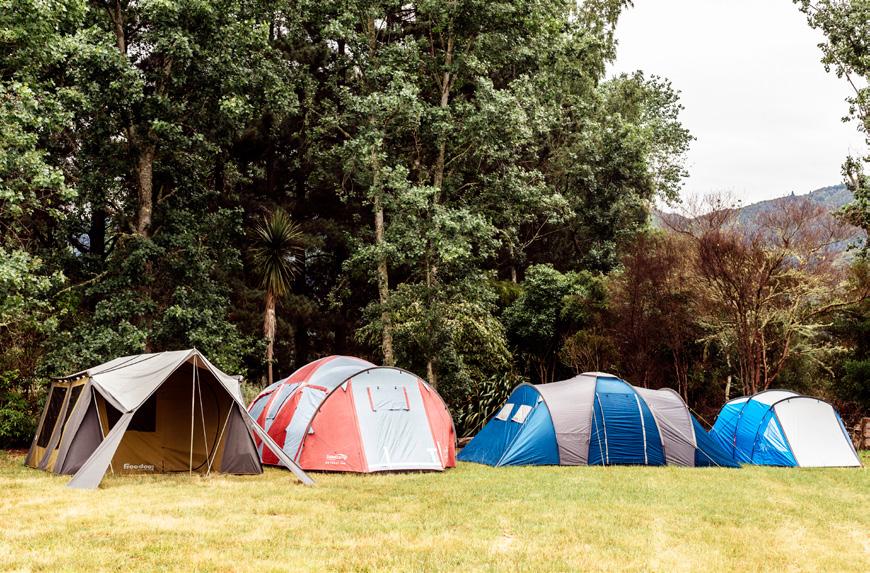
RENEE THOMAS
‘Our whānau and hapū lived here along the coast during the warmer months, and in the colder months, they lived on the hills behind the Mārahau township. We collected kaimoana and other kai all year around,’ says Rōpata Taylor, General Manager, Manaaki. This place is in his blood. ‘My ancestor Wi Parana, who was also known as Ngāmamaku, lived here. He was from Te Ātiawa and was a tōhunga.’ He married a Ngāti Rārua woman called Te Rangimatohe, thereby consolidating a critical alliance.
‘The whānau here planted potatoes and kūmara, and their winter storehouse was out on Motu Aorere-iti, or Fisherman’s Island. There are still pits
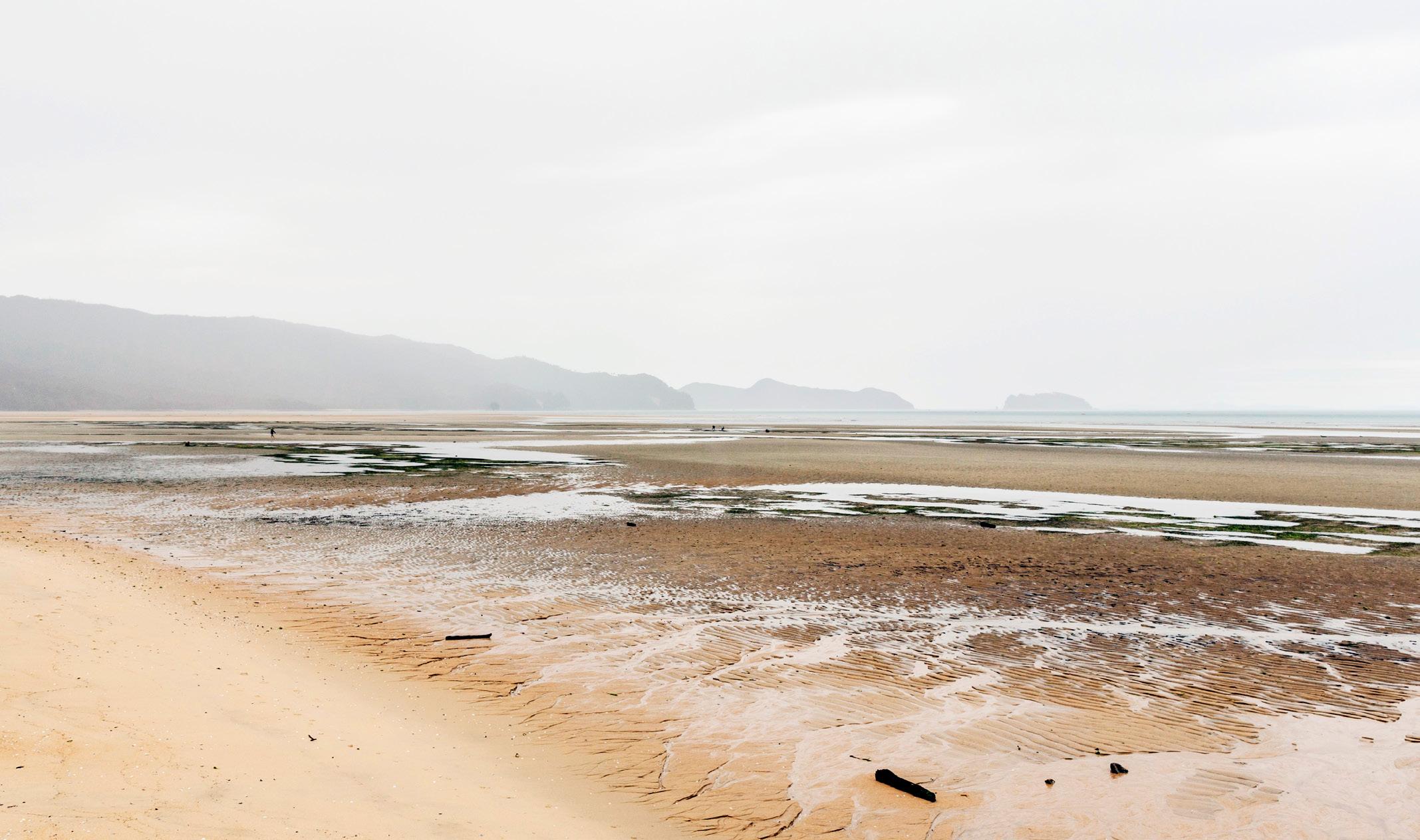
Whānau tents at Mārahau, December 2019
there, on the high centre – root cellars for the crops they grew. The island microclimate was ideal, nice and cool, and the kiore couldn’t get into the food stores.’ If the gardening was good in those days, it was about to get vastly better with the arrival of the European settlers, who became a lucrative market for produce. ‘They would travel all the way into Nelson,’ says Rōpata, ‘landing at Mātangi Āwhio, Auckland Point, and trade there with the New Zealand Company settlers.’
‘We planted some trees the other week,’ says Renee, ‘and the soil was just unreal – lovely black soil – so you can see why, naturally, people would settle here, because you’ve got food on one side, and
6 Renee Thomas and Matt Kelly in their coffee cart at Mārahau.

more food on the other. And these natural vantage points where you can see who’s coming from any direction.’
The gardens are still here and the whenua still calls families home. Renee, and her husband, Matt Kelly, had done a few camping holidays here when they decided to take on the role of kaitiaki. ‘I’m a recovering accountant,’ she quips. ‘I sold my house, quit my job, and bought a coffee cart.’ It’s sitting beside the house where the couple now live, caretakers to the 18 hectares of grounds. Matt is mowing lawns, and Renee’s wrangling bookings for Haumoana (that wind gets another mention), the bach that is available for Wakatū whānau to rent for holidays.
Mārahau has always offered sanctuary for the Wakatū whānau. It still does: it’s available for Wakatū Owners to come and enjoy any time they like, either by way of camping or holidaying at Haumoana, and as far as Renee’s concerned, the more, the merrier. ‘I love it most in summer when we have people here because it makes the place feel alive. It’s just magical. You’ve got kids here, you’ve got families here – our wider whānau all coming together.’ Renee sees people reconnecting with their whenua and the wider whānau and hapū every summer. ‘Last summer, we had a couple of families that had never camped here before. You could see the transition – at first, being anxious about not being able to hook into wi-fi and really missing that. Then by day three, they are so relaxed. You’d see the kids out on their bikes or walking around the property, spending time together, with their cousins. It’s not just about reconnecting with the whenua, it’s about reconnecting with each other, at that whānau base. People can go out with their kids to collect kaimoana or go floundering at night – all those customary things that we do, and we used to do before iPads. Kids love that stuff.’
Rōpata says Mārahau offers Wakatū Owners a chance to reconnect with their land after decades of alienation. For some, that bond will have to be re-learnt. Whole generations were estranged from Mārahau after it was placed in 1843 under the statutory management of Crown trustees, who leased it to a succession of settlers. ‘Most of our lands in the Nelson region were under lease in the period 1843–1977. The Owners couldn’t control or influence the use of the land or the terms of the
leases – in almost all cases, the Owners could not access their own land. This was one of the main reasons why our grandparents fought so hard for the return of the management of their land, and the establishment of Wakatū in the 1970s.
‘It wasn’t until 1977 when Wakatū Incorporation was established and the control of our land was returned to the whānau that we could begin the process of opening up our lands to the whānau as well as making our own decisions about what would happen on our land.’
Mārahau is part of the larger land estate that Wakatū owns across Nelson, which includes commercial and residential developments as well as its orchards and vineyards. After the Crown, Wakatū is one of the largest land owners in the Nelson region. ‘Our intention at Mārahau is to create a place where we can ensure that sense of direct connection to the whenua – this in turn makes sure we maintain a sense of identity for the whānau of Wakatū. A place where they can come and relax, but also gain a deeper insight and understanding of the way our ancestors lived on the land.’
‘When it came back to us,’ says Wakatū CEO Kerensa Johnston, ‘probably for the first 20 years of our existence, there were lots of discussions about that land; about how it might be developed, what might be appropriate.’ Over the years, various
RENEE THOMAS
commercial proposals were put forward, including a hotel to service the tourist industry, but Kerensa says the drive for development has given way to a wish for protection and care of this special area. ‘It’s important that our whānau have a place they can go, and be on the land and water, and exercise their customary practices. Many have lost that opportunity, because they’ve moved away from their customary area and whenua. It’s really important that they have a place they can come and be together as whānau, especially for those who now live outside of Nelson.’
Some people in the community assume the land is public property, because there is very little development on the land. ‘From time to time, we get complaints from people who believe they have the right to roam over the land and beach area, which is privately owned by Wakatū,’ says Kerensa.
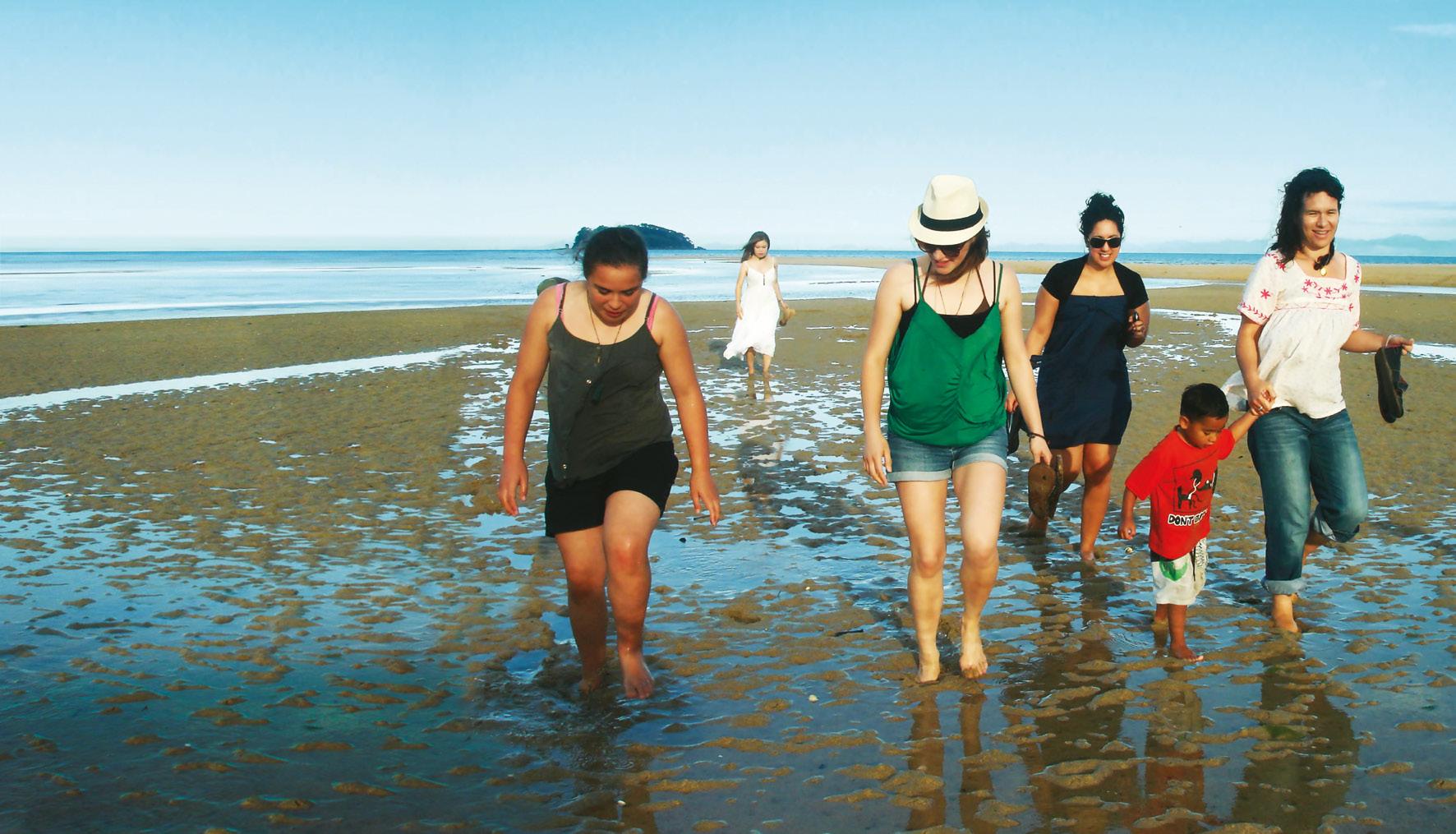
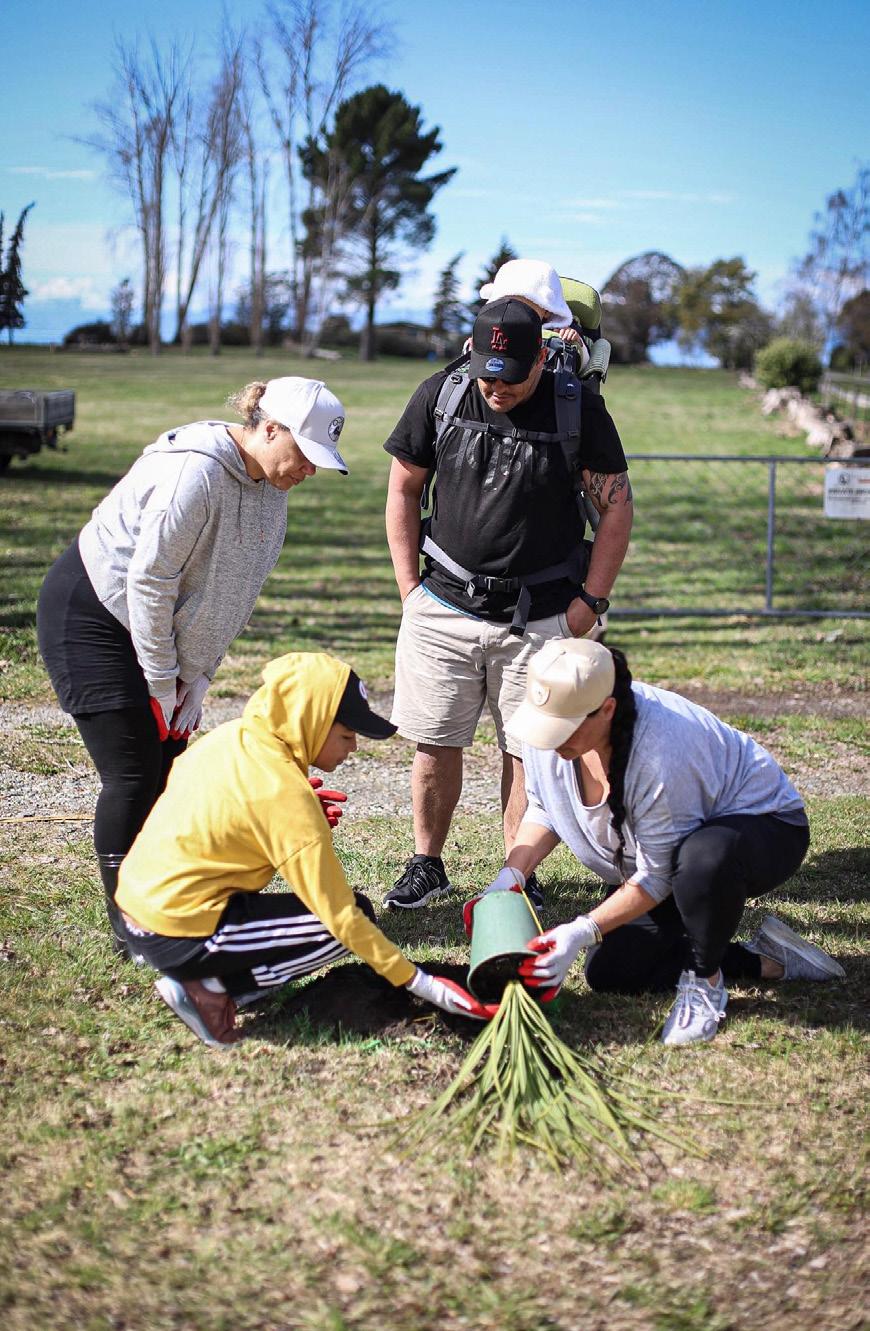
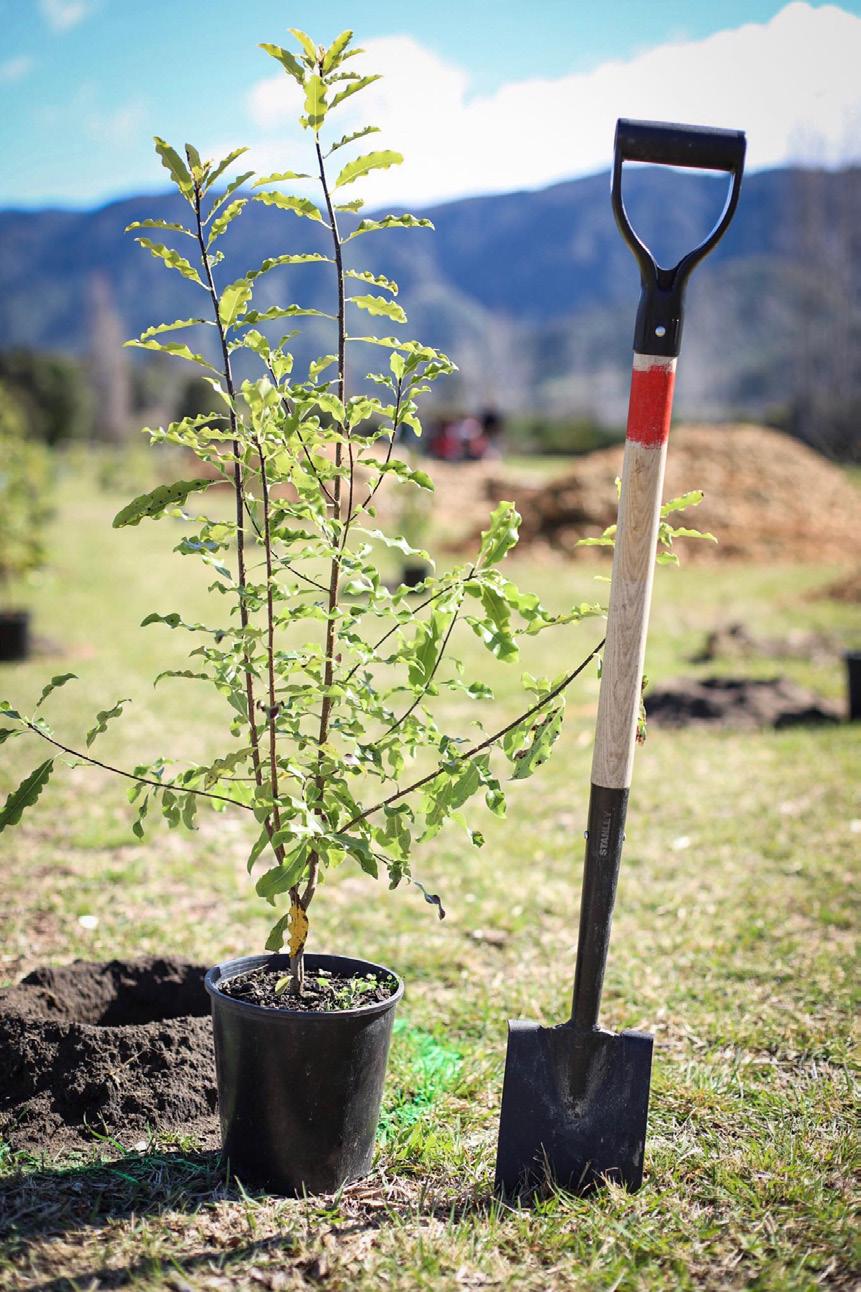
Top: Planting at Mārahau by, from left to right: Colleen Carew, Nick Rangi, Helen Carew and Grace Walker. Above: a tarata (lemonwood) ready for planting. Photos: Naomi Āporo.
At present, along part of the road boundary, a single rope undulates through occasional posts, making the grounds look for all the world like a public park. So, a big part of Renee and Matt’s job is to explain that the land is private property and that there are good reasons why some areas of the beach are restricted. ‘We explain to people that the area is culturally sensitive, and that there have been kōiwi tangata exposed on the beach. Most people respect that, and they understand why in particular we don’t allow any vehicles or boats along the foreshore as they can cause damage and interfere with the planting programmes underway,’ explains Renee. The Mārahau boundary extends well out onto the tidal flats, so the kaitiaki spend their summers correcting common misperceptions about the Queen’s Chain. ‘People are always insisting that the beach belongs to everybody,’ says Renee, ‘but there are many areas of New Zealand’s foreshore that are in private ownership, including our land at Mārahau.’
But the shape of that foreshore and beach area is changing. A line of dying grass marks the intrusion of the latest king tide, each higher than the last, which is eroding the whenua. Much has been lost: the caretakers’ house was moved inland in 1992. Renee points to where it once stood, on what is now shellbanks under an incoming tide.
Across the road, behind the line of water taxi and sea kayak outfits, machines are levelling the land, ready for up to 65 new houses. The subdivision is a Special Housing Area; affordable homes being built under Housing Accords signed between the government and the Tasman and Nelson councils in 2017. Mostly, the machines are digging up sand, and Wakatū has negotiated a win/win that might offer a solution to sea-level rise. Renee points out the heaped spoil from the subdivision that will become, she hopes, a new dune system.
The plan is to heap the sand along the shoreline, sufficiently inland to give dune plantings time to establish and bind the defences before the tides reach them. ‘It’ll take time,’ says Rōpata, ‘and initially, we’ll still lose more land, but it’s a more natural thing to do. We’ll try to restore the ecology if we can. We need to create a different gradient on the shoreline, so that when the tide comes in, the energy disperses naturally upslope. One of our
Drone photo of Marahau: Andrew Boyes, GNS Science.
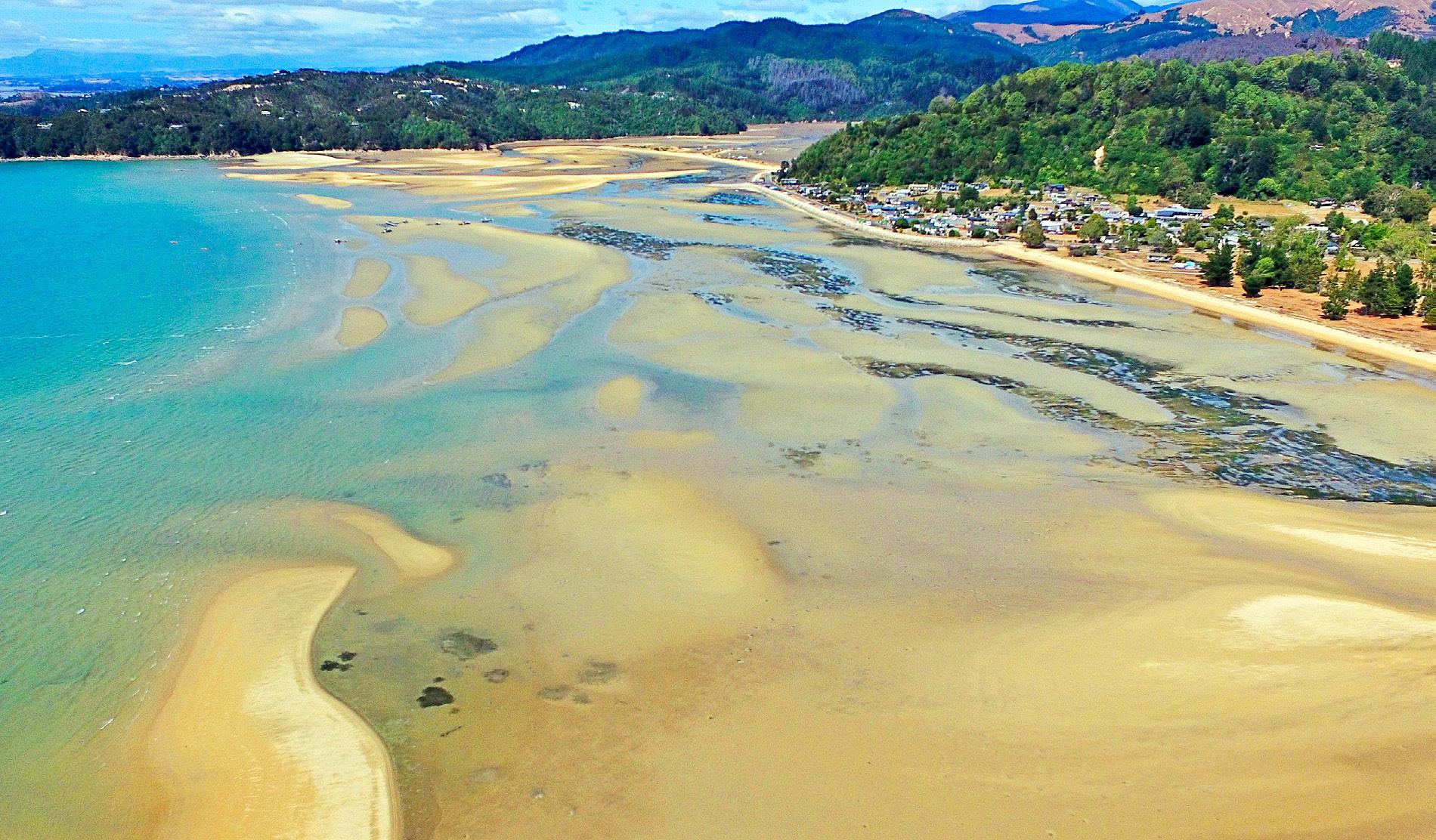
Owners, Tuaiwa Rickard, is a coastal scientist, and she’s been leading a project to look at how best to proceed, and we have a hydrologist looking at water movement in the bay. Our response will be a mix of customary knowledge, scientific expertise and our own resources. I think it sits well with our values base,’ he says.
Plantings have already started elsewhere along the road, to create a more tangible boundary. And Renee wants future campers to enjoy a little more privacy, and shelter from that afternoon sea breeze, with ‘little glades of native species. We want to fence it as well, just to give a bit more privacy. People generally don’t camp in the back paddocks, because the whole world can see in when they’re walking past. If we can create a bit of privacy there, I think our families might use that area more.’
Those who do make the trip to camp must be willing to deal with facilities you might call basic: the toilet block is a converted shipping container delivering to septic tanks. There’s no power, no cooking facilities, and no showers. ‘You can always bring a caravan, but there’s nowhere to plug it in, that can be tough for some people, but it’s also one of the beautiful things about Mārahau too – it is definitely back to nature and living on the land.’ Haumoana, the holiday bach, sleeps ten, and it runs on gas and solar rather than mains electricity. At peak times, like Christmas, Wakatū suspends the usual booking system and runs a lottery system instead due to the demand for the bach. ‘You put your family name into the ballot system and Wakatū randomly selects who can use the bach over the busy Christmas and New Year period. The rest of the time, you can book the bach via the website.’
STAYING AT MĀRAHAU Information about how Wakatū whānau can apply to stay at Mārahau is on the Wakatū website at www.wakatu.org/whanau#marahau
Applications to camp over the Christmas break must be received by 10 December each year.
Haumoana is available exclusively to shareholders of Wakatū. To check availability and to book go to www.holidaynelson.co.nz and search for Haumoana.
Requests to book Haumoana over the Christmas break are automatically put into the ballot, and the successful applicants are informed in early December.

